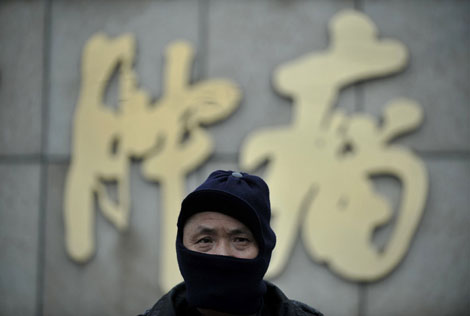Cancer in China influenced by pollution, poverty
Cancer and its treatment in China is influenced by air pollution, poverty and a fledgling medical insurance system, the Health News, an affiliate newspaper of the Health Ministry, reported Monday -- also World Cancer Day.
The same type of cancer shows different characteristics in the east and the west. Treatments also vary due to social and economic factors. The Health News cited breast cancer, lung cancer, and colorectal cancer as examples.
Breast cancer
While the incidence rate of breast cancer shrinks in western countries, the traditional high-burden countries, it is on the rise in China as a result of changes in lifestyles, living conditions, diets, and the westernization of cities, Jiang Zefei, breast cancer expert with the 307 Hospital of PLA, said in Health News.
The peak age for breast cancer in China is ten years earlier than that for white women, Jiang added.
According to the "national report on tumor registration 2012," in terms of age groups, the incidence rate of breast cancer surged among women above 25, peaking at 50.
The Health News also cited the report as saying the average age of breast cancer patients seeking treatment is 48.7, ten years ahead of that in the west.
In terms of treatment, while women in developed countries have better access to professional tests against breast cancer owing to national programs, a developed medical insurance system and family doctors, Jiang said, Chinese women mainly rely on simple self-examinations without the use of medical devices for disease detection.
Jiang observed that more Chinese women tend to give up their breasts even if not having to, while 80 to 90 percent of American patients choose to save theirs.
Apart from cultural differences, this has something to do with limited medical insurance for Chinese patients, Jiang said, adding many poorly-insured patients have their breasts removed because they cannot afford long-term radiotherapy.
Lung cancer
Chinese patients tend to have more severe adhesion and calcification at pulmonary hilar lymph node, when compared to Europeans and Americans, according to Wang Jun, chest surgery expert with the Peking University People's Hospital.
In Health News, he attributed such characteristics to air pollution, living conditions and diet, among other factors.
Abnormal hyperplasia at pulmonary hilar lymph node means higher risks during surgeries, Wang said. As the blood vessels at the pulmonary hilar region have extremely thin walls, separating the adhesive hyperplasia could lead to massive, life-threatening bleeding in the chest.
 |
Colorectal cancer
In China, the age of colorectal cancer incidence is ten years earlier than that in western countries. While the west reports more cancer of the colon than rectal, it is opposite in China, Gu Jin, colorectal surgery expert with Beijing Cancer Hospital, said in Health News.
Gu said there had been no convincing explanation yet due to a lack of large-scale epidemiological surveys.
However, he said poor medical insurance contributed to Chinese doctors searching for flexible ways of treating rectal cancer.
The internationally recommended therapy for rectal cancer is a 25-day radiochemotherapy prior to surgery with a six-to-eight-day break in between. However, cash-strapped and poorly-insured Chinese patients find the therapy lengthy and costly, Gu said.
As a result, doctors came up with a new treatment scheme, ten-day radiochemotherapy followed by a two-week break before surgery, which proved to work well too, Gu said.
According to the "national report on tumor registration 2012", it estimated that there are 3.12 million new cases of cancer each year in China. There are 2.7 million cancer-caused deaths, which represents 13 percent of total deaths of Chinese people.
 RSS Feed
RSS Feed Twitter
Twitter










0 comments:
Post a Comment